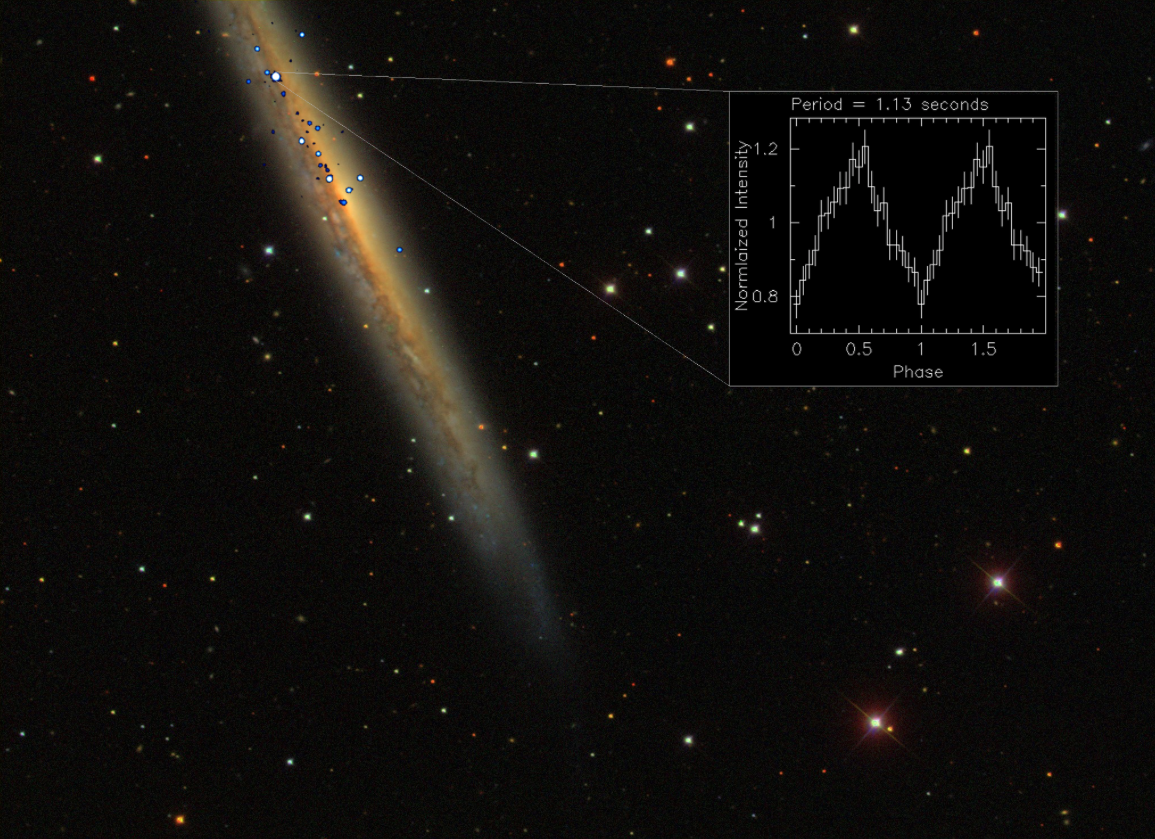
NGC 5907 ULX is the brightest pulsar ever observed. This image comprises X-ray emission data (blue/white) from ESA’s XMM- Newton space telescope and NASA’s Chandra X-ray Observatory, and optical data from the Sloan Digital Sky Survey (galaxy and foreground stars). The inset shows the X-ray pulsation of the spinning neutron star.
Credits: ESA/XMM-Newton; NASA/Chandra and SDSS
Astronomers used NuSTAR to observe the brightest pulsars that have ever been detected. The source is located about 50 million light years away from Earth, making it the farthest known neutron star. In one second it emits as much energy as our sun in three and a half years. Gian Luca Israel, first author of the relevant study, said that the pulsar is 1,000 times more luminous that what our current theoretical models can predict, thus a revision of the models is required to explain the extreme luminosity of this source.
The previous record for the brightest pulsar was held by M82 X-2 and was also detected by NuSTAR. This source is located about 12 million light-years from us, in the “Cigar Galaxy”. Nevertheless, the new discovered pulsars exceeds the brightness of the M82 X-2 by a factor of ten. Another extremely luminous pulsar was observed using a combination of NuSTAR and XMM-Newton observatories.
Scientists call these kind of luminous pulsars “Ultraluminous X-ray sources (ULXs). What caused these sources to be so bright remains a mystery. A plausible hypothesis is that their strong and complex magnetic fields distort the flow of incoming material close to the neutron star. This would allow the neutron star to continue accreting material while still generating high levels of brightness.
Publication: Israel et al. 2017
Source: NASA
